
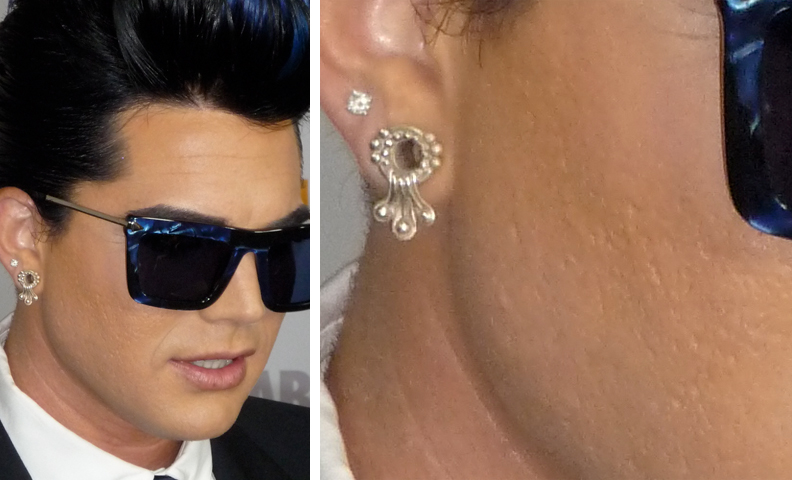
In 2009, American Idol introduced a breakout star in Adam Lambert. As the first runner-up, he received millions of Middle America’s votes. Throughout the season, he harbored a closely held secret. A secret that if revealed might have altered voters’ perception of the androgynous singer. A secret barely concealed under the harsh stage lights and HD. A secret that was nearly spoiled by circulating photos on the internet. The secret? Adam Lambert is…acne-prone.
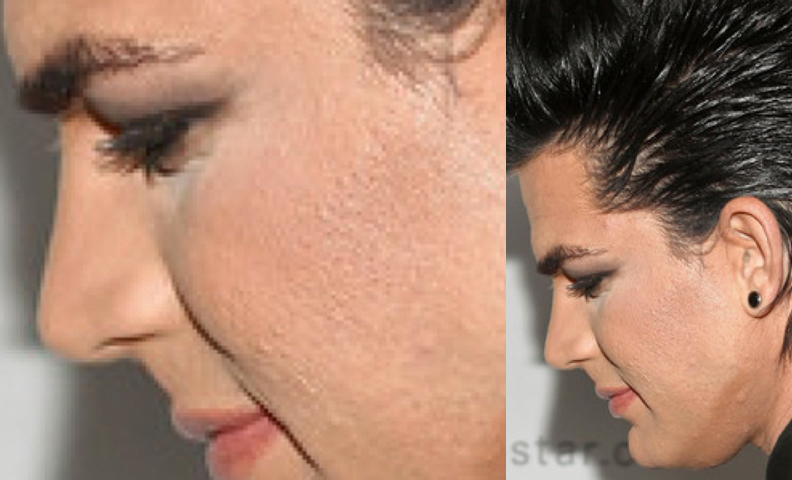
Though clear skin is considered beautiful, Glam-bert is one of many singers with problem skin. He had active acne cysts during the season and shows significant acne scarring. With the release of his first album, Lambert has generated controversy with racy performances. Shall he continue the bland Idol persona, or be true to himself as a performer? Fortunately, he can continue to break down pop music barriers rather than breaking out and popping zits.
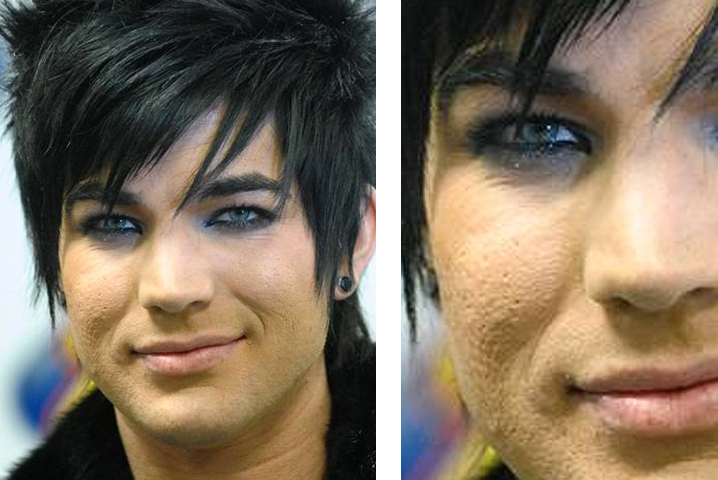
For years, pimply pubescents and acne covered adults have been treated with a vitamin A medicine known as Accutane. Though 2009 saw the end of the brand name version of this treatment, effective generic versions remain available. While not for everybody, particularly pregnant women (because of serious birth defects), Accutane can substantially reduce inflamed acne, blackheads and zits in general. Just ask Jessica Simpson. The Idol competition is a long process, with auditions, performances, and gratuitous Simon Cowell T-shirts. Similarly, taking Accutane in the US involves enrolling in an online database, blood tests, doctor visits and serious moisturizing. The results can make even a tone deaf Idol wanna-be sing a pitch perfect aria.

Yet even if Lambert were to take four to six months out of his recording and touring schedule to complete an Accutane course, he would still be left cratered and pock-marked. While Accutane addresses active acne, it does little to clear acne scars. Fractionated lasers such as the Fraxel can help to generate collagen and minimize acne scars. Though helpful for superficial scarring, sessions can be as painful as an Idol results episode. Swelling is as common as Randy Jackson’s use of the word “Dawg.” Several treatments are required, just as week after week passes before reaching the Idol final. Whether Lambert pursues these treatments the way he can’t resist a thumpin’ disco beat, he remains a true American original.

Runner up, Celebrity Skin Secret: Katy Perry’s acne scars
In 2009, pop belter Perry admitted to having acne scars dating to the stress of her early career. Can we look forward to a Perry/Lambert duet about this issue?

Occasionally, television programs can do more than just amuse. In Spring 2009, “Gray’s Anatomy” may have helped save lives. Fresh off a silly story arc involving hot sex with her ex’s ghost (we’re not making this up), Katherine Heigl’s character confronts a true scare: Melanoma skin cancer.
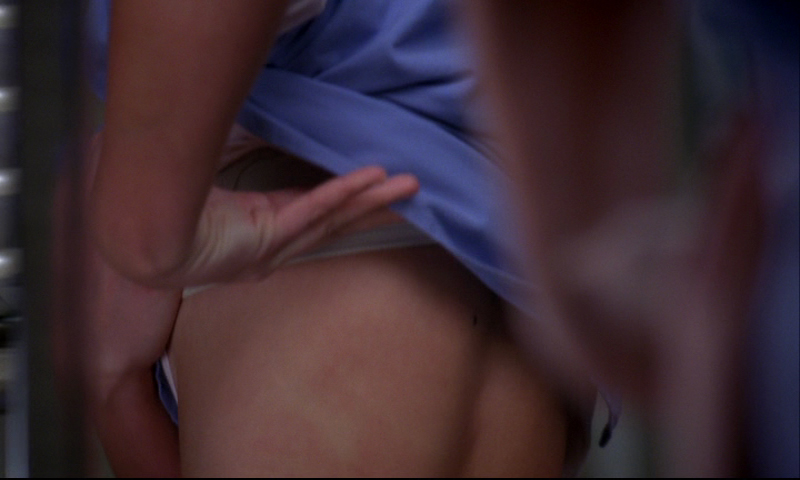
Noting a small lesion on her back, along with headaches and the spirit sex hallucinations, Heigl’s tests show metastatic cancer. She undergoes chemotherapy, loses her hair, and in the show’s season five finale, flat lines on the operating table.
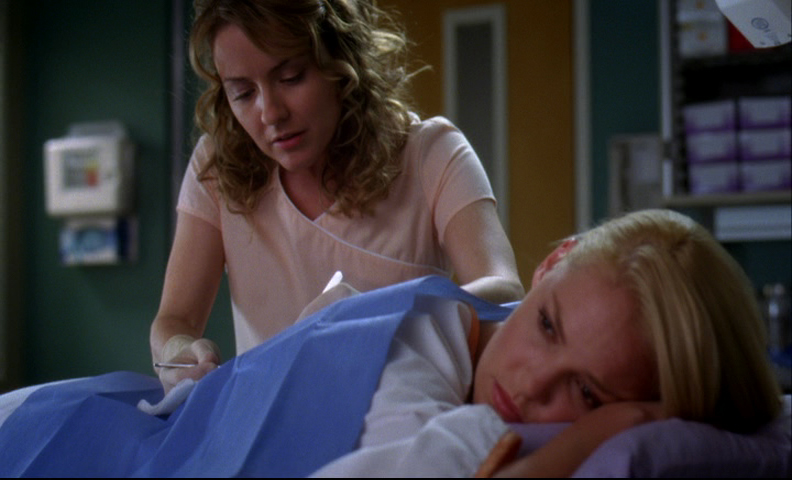
What inspired the show’s producers to create this story line? Was it McSteamy actor Eric Dane’s brush with relatively benign precancerous lesion? Was it Heigl’s burgeoning film career, allowing her character an option to leave the show for good? Whatever the reason, they got the details (mostly) right. Young women can get life threatening melanoma skin cancer. Youthful sunburns combined with tanning bed exposure directly contribute to the risk. Usually, the lesions like that shown on Heigl’s back would be superficial enough to be fully treated with a surgical removal. A melanoma capable of traveling throughout the body would typically be larger and more raised.
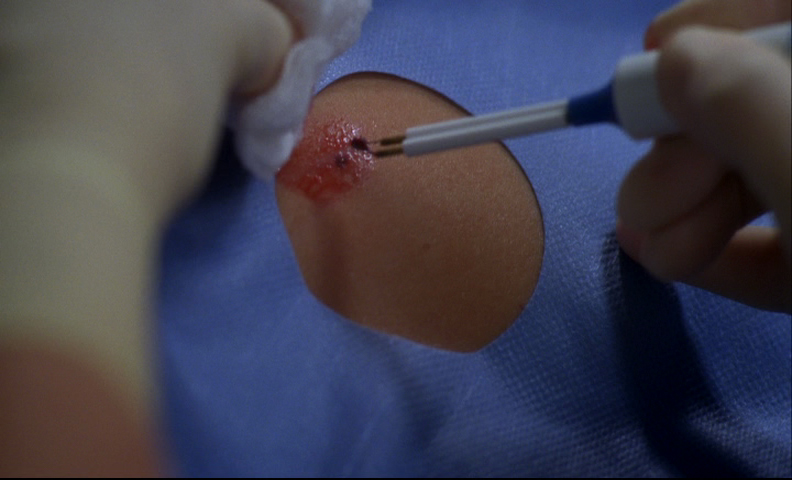
The important news is that viewers were alerted to check their moles and contact their doctors. We can’t know how many dermatology visits occurred after “Anatomy” episodes or if any melanoma lesions were discovered because of the show. Since catching and treating melanoma works best as early in the process as possible, hats (and surgical masks) off to Heigl and the “Anatomy” producers for spreading an important message. Not to mention dropping the hunky ghost plot.
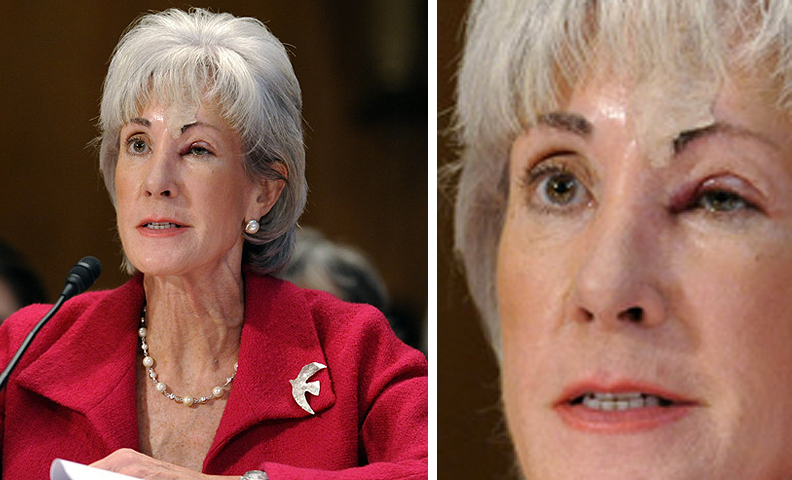
Runner up, Life Saving Storyline: Kathleen Sebelius has skin cancer surgery
Sebelius, the current US Secretary of Health and Human Services, was treated for basal cell skin cancer on her forehead, causing temporary eye swelling. Fortunately the basal cell cancer was entirely removed and she returned to testifying before Congress the week of her surgery.
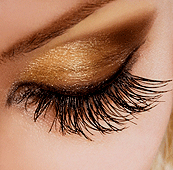
With the explosion of Youtube and other video sites, information spreads like lightning. The thunder you hear are the sophisticated parodies that quickly follow. Latisse, a topical product that lengthens eyelashes, was released in 2009. Even as its use skyrocketed, a spoof commercial debuted at FunnyOrDie.com: “Lashisse.”
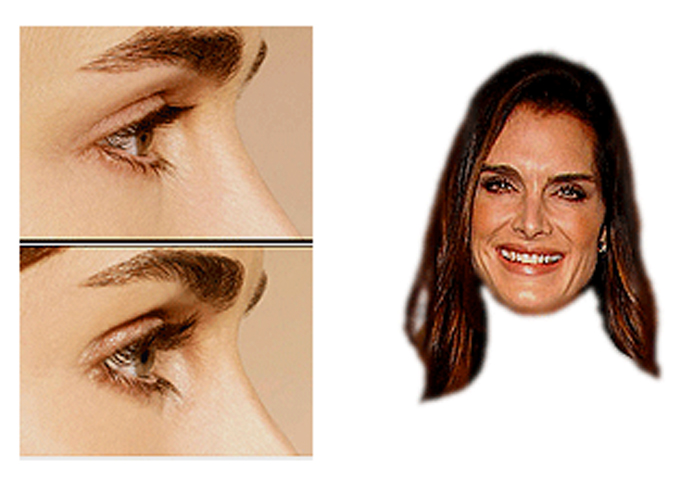
Latisse, the actual treatment, stimulates eyelashes to grow longer and thicker. Typically, lashes respond in just a few weeks with best results noted at 1-2 months. Allergic reactions can occur, but are rare. The active ingredient is also in an eye drop treatment for glaucoma. When dripped within the eye, a rare side effect is a darkening of the pupil. Since Latisse is instead applied to the upper eyelid, this discoloration is unlikely. Brooke Shields, the celeb spokesmodel for Latisse, needn’t worry about getting pupils as black as her lashes.

“Lashisse” is the spoof product in a video featuring TV actress Molly Sims (right). While prominent lashes in women are a sign of health, youth and beauty, Sims shows that there can be too much of a good thing. The satire shows lashes that stretch around the scalp, blow in the wind, and even crawl away. Though results with Latisse are never this extreme, lashes up to 1-2 inches long are possible.
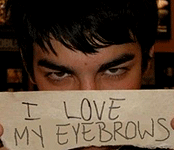
Though Latisse doesn’t appear to work for scalp hair (sorry Bruce Willis!), thin eyebrows may also respond. The Jonas Brothers don’t seem to be candidates!
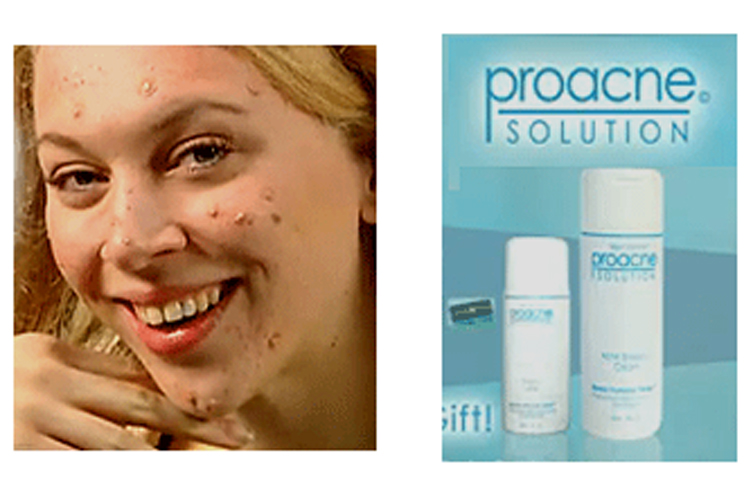
Runner up, Spoofable Product: Proactiv
Youtube features a clever takeoff of Proactiv, the heavily marketed acne treatment that may promise more than it delivers. For those desiring clogged pores, Pro-acne is for you!

Dermatologists help patients with hair issues. Patients of African descent can suffer hair loss and brittle, damaged locks. To hide damaged hair, wigs, weaves and extensions are used, which are expensive and demand constant maintenance. Often these problems are related to treatments that straighten naturally curly hair.
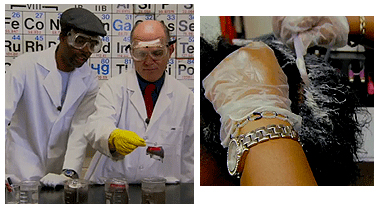
In his funny and insightful documentary, comedian Chris Rock examines the roots of this issue, pun intended. “Good hair,” per the movie, refers to long, straight hair, considered by some to be a standard of beauty. To achieve this appearance, chemicals known as relaxers can be use to unwind a curly ‘do. If left in the scalp too long, however, skin burns and hair loss can result.

In the movie, hip-hop duo Salt N Pepa reveal that the asymmetric hairstyle seen in the video for “Push It” was actually from a chemical burn. Too much relaxer, applied too long, caused temporary baldness, not beauty. Props to the pair for turning this accident into a stylistic trend.

Many women also use tight cornrows hairstyles. This practice runs the risk of chronically pulling at the hair follicle. Over time, the follicles stop making hair, causing hair loss. Supermodel and talkshow host Tyra Banks shows the "high forehead" in part caused by cornrows. Using a looser braid can prevent this side effect. Kudos to Rock for addressing potentially harmful style choices.


For her adult career, Lindsay Lohan has projected a bad girl image, with alleged partying, drug use and rocky relationships. While this has been great for the tabloid business, Lilo’s film and music career is nearly awol. In 2009, Lohan may have begun her comeback bid by helping young people’s skin worldwide.

With red hair and a very fair complexion, Lohan would have done well to avoid the sun growing up. However, she came of age in Hollywood, the land of “healthy tan.” Her extensive freckling shows that she had excessive sun exposure. By her early 20’s, her spots seemed subdued, prompting a previous Skinnies Award. Her potential for sun damage remains. In 2009, she released a sunless tanning product. By endorsing this coloring cream, Lohan has joined the ranks of the sun protected.

The sun damages skin cells, increasing the risk of skin cancer. In 2009 mainstream media reported that tanning beds also cause melanoma. If one doesn’t want to appear fashionably fair like teen tunesmith Taylor Swift, sunless tanners are a healthy alternative. These products contain organic dyes that safely tint the skin. While giving a temporary skin coloring, these products provide little protection from solar radiation, so sun blocks are still recommended.

While we are thrilled that Lohan is advocating sun avoidance, too many years in bikinis have resulted in early sun damage.
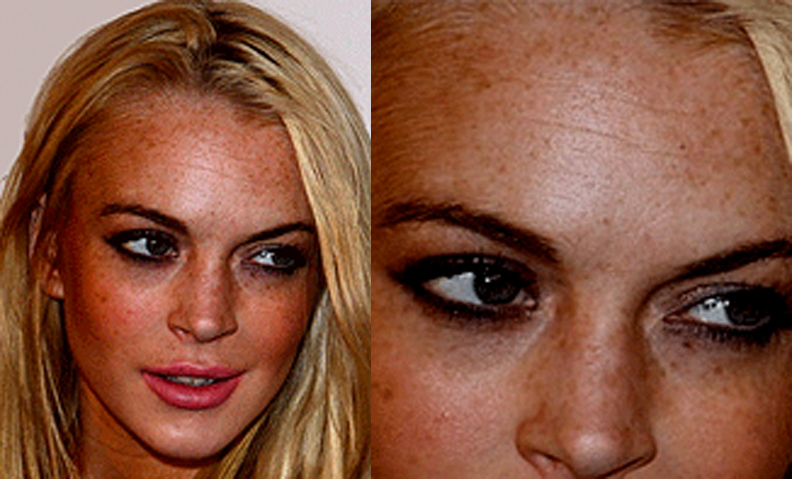
Note the advanced wrinkling and discoloration. Retin-A, Botox and fillers like Juvederm can help to defray some of the losses of collagen and volume. Lasers can be used fade sun spots and improve skin texture. But she would see little benefit without the use of sunscreen.

Lohan’s early wrinkling can be arrested by sun protection. We hope that the above phrase is the last time the words “Lindsay Lohan” and “arrested” end up in the same sentence.

Runner-up, Better Late Than Never: Britney's neck tatt removal
Britney Spears has had at least one of her tatts removed. These Hebrew characters were said by some to be in the wrong order. A high profile typo, likely cleared with laser.Director James Cameron’s science fiction/epic/romance/western/ecofable takes us to new worlds with breathtaking computer generated images. Yet Cameron grounds his innovation with standard movie storytelling. The plot includes elements from his own Terminator franchise, as well as old Western flicks.
When Stephen Lang strides onscreen as the aggressive soldier Colonel Quaritch, he features one of film’s oldest fixtures: traumatic scarring. His character took quite a slashing in the jungles of Pandora—the thickened scars bulge angrily in 3-D. For those who have not yet responded to Cameron’s siren call and actually seen “Avatar,” we won’t act as spoilers, except to say that Quaritch is not a cute cuddly scarred character, but the traditional stereotype: A scarred villain.

This image of Frankenstein represents the special effect breakthrough of its day, a hundred years ago in 1910. We’ve come a long way, Frankie! Except with the concept that damaged skin reflects damaged morals. From Darth Vader to Pacino’s “Scarface” and Freddie Krueger, scarring has been a film maker’s crutch to telegraph a character’s malevolence. Even Disney got in on the act with the murderous “Scar” in “The Lion King.”
Surely, audiences would have a clue based on the colonel's actions. Does he need to have a record of his physical trauma as well? Maybe Cameron decided to throw the prosthetic makeup crew a bone since so much of the film was done with cgi.
While topical scar creams do little to flatten thick skin scars, lasers can be used to reduce redness and cortisone can be injected to thin the excess collagen. Clearly chugging coffee isn’t helping his skin or his mood.

It makes us appreciate another blockbuster franchise all the more. Can you imagine a series where the hero sports a significant facial scar? Kids unfortunate enough to suffer facial trauma might have a positive role model, instead of yet another malformed malevolent murderer. Maybe the “Avatar” sequel can feature a cameo from a certain adolescent wizard. Quidditch on Pandora in 3-D? We’re there!

Runner up, Deformed Evildoer: Giant Frenchie Thug in “Sherlock Holmes”
As if his hulking stature and phony French accent weren’t enough, this gruff Gaul goon was given grotesque burn scars.

Tinseltown can’t resist movies based on reality. Long before reality TV, the cinematic phrase “Based on a true story” ramped up the drama. It implied that audiences were watching actual events, not the just the musings of a caffeine-fueled screen writer. But films rarely paint a true portrait of history. With music, compressed or added characters, and an altered perspective, docudramas like “Milk” or “The Changeling” play fast and loose with the facts.
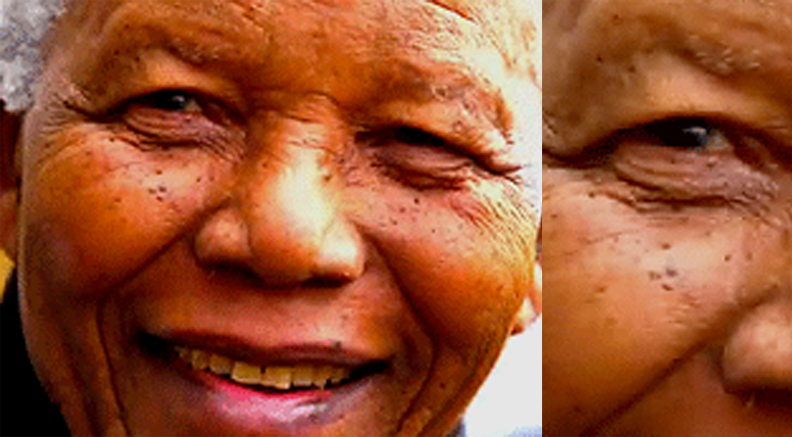
“Invictus,” the tale of the South African rugby team under Nelson Mandela’s transformative presidency, is no different. Many scenes are lifted straight from television footage of the time. But as Mandela, Morgan Freeman’s appearance is greatly exaggerated. Mandela (shown here) certainly had the small facial bumps known as DPN’s. These non-cancerous lesions are as common in older people with darker skin tones as was the oppression that occurred during Apartheid.
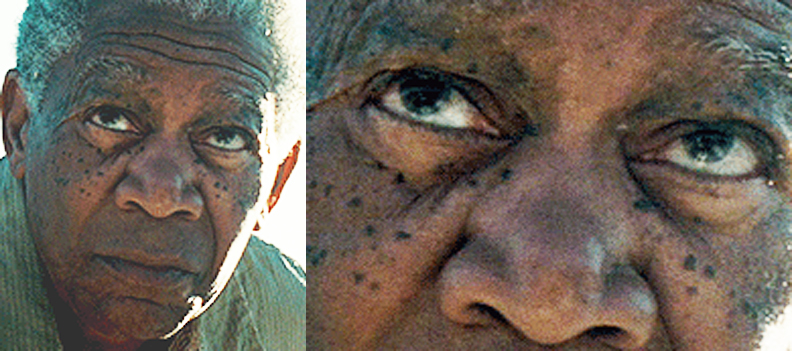
Yet in his portrayal of Mandela, Morgan Freeman’s growths are dramatically increased in size and number, looking like small rugby balls bouncing across his cheeks. These lesions seem to convey Mandela’s humble origins and ability to relate to the people. We realize that these Freeman’s spots are not prosthetic makeup or cgi.
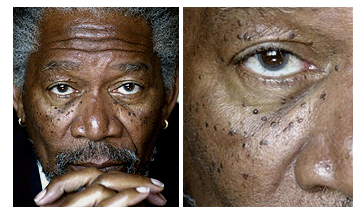
Though they are a sign of “maturity” and are not dangerous, DPN's are easier for doctors to treat than for Americans to understand rugby. The face can be prepared with a topical anesthetic and then treated with a low strength electrical device (hyfrecation) or certain lasers. Freeman has clearly avoided this intervention, proving that like Mandela, he is master of his fate, the captain of his soul.
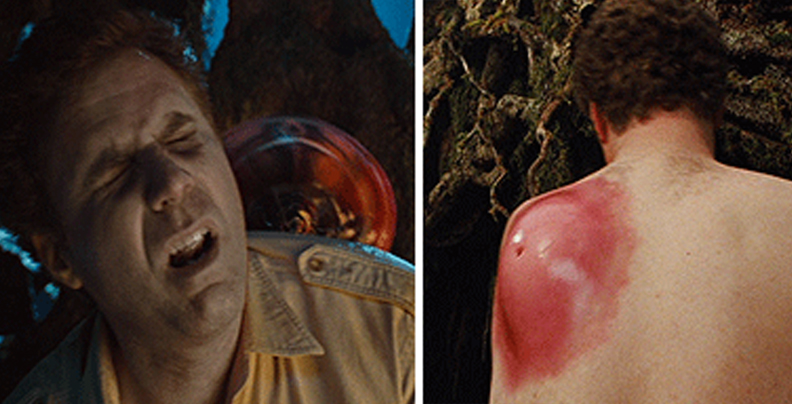
Runner-up, Hollywood exaggeration: Will Ferrell's Mega Insect Bite, "Land of the Lost"
Some people are prone to swollen allergic reactions when bitten by mosquitos. Yet we've never seen swelling quite like this! Strong cortisone creams or even cortisone injections can take the edge off of stings. Patients shouldn't feel "Lost," treatment is available! Will Ferrell makes a good snack.. ...for this mutated mosquito. A bite only Hollywood could imagine.

Adam Lambert wasn’t the only breakout star of the last twelve months. 2009 was also the year of Borrelia Burgdorferi. Not a household name? Maybe that’s because the bacteria that causes Lyme disease gets picked up outside the home.

Lyme disease has lurked just outside the media spotlight for years. Singer Daryl Hall was diagnosed in 2005 and continues to suffer symptoms. Have you heard of singer Neneh Cherry? In the 1980’s, she was a pop music force, the Rihanna of her day. She had Lyme disease, though recovered fully. George W. Bush had a mild case and we haven’t heard from him for months.

This year, Lyme disease hit the indie film world when afflicted actress Parker Posey pulled out of an Off-Broadway production. After a course of antibiotics and some dietary changes, she is reportedly back to good health.

Cable TV is forever changed because of the annoying ailment. On “Curb Your Enthusiasm,” Larry David pitched a “Seinfeld” reunion show to the fictional head of NBC. David so angered the suit that the reunion was nearly cancelled. On a whim, Larry correctly diagnosed the executive’s early Lyme disease, saving the “Seinfeld” project. A documentary about Lyme disease called “Under Our Skin” was considered for an Academy award.
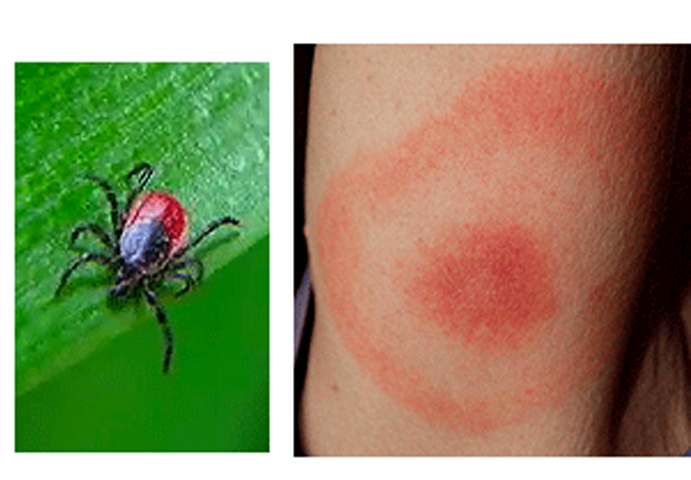
Untreated, some can go on to have chronic symptoms, including nerve problems, sore joints, depression, and fatigue. There is controversy about “chronic” Lyme disease. Since blood tests are notoriously unreliable, some patients with similar symptoms may be diagnosed, possibly incorrectly. Also, after the initial time frame, not every patient will respond to antibiotics. Unfortunately, the documentary “Under Our Skin,” though helpful in spreading the word about the condition, also muddies the waters. The film makers argue that doctors and pharmaceutical companies have conspired to limit research, preventing work on a cure for the condition. This type of zany conspiracy theory suits AM radio or cable news pundits fighting for ratings, but it doesn’t help patients with a potentially debilitating condition. As a physician, I have no reason not to want to see the Borrelia Bergdorferi bacteria beaten back into obscurity.
Forty years ago, Borrelia was as much an unknown as the many aspiring young film actors currently toting their iPods to screen tests. Young people would get arthritis, fevers, and a lack of energy but the cause was a mystery. It was finally shown to be due a bacteria living in deer ticks. People become infected when a tick (as small as the head of a pin) bites the skin, especially after exposure in the woods or high grass. In some patients, a circular rash spreads much scandalous celeb videos spread online. If treated early, with a course of antibiotics, the infection clears.
Forty years ago, Borrelia was as much an unknown as the many aspiring young film actors currently toting their iPods to screen tests. Young people would get arthritis, fevers, and a lack of energy but the cause was a mystery. It was finally shown to be due a bacteria living in deer ticks. People become infected when a tick (as small as the head of a pin) bites the skin, especially after exposure in the woods or high grass. In some patients, a circular rash spreads much scandalous celeb videos spread online. If treated early, with a course of antibiotics, the infection clears.

Runner up, Infection of the Year: Swine flu
Swine flu traveled the globe on an unscheduled press junket. It even gave Rupert Grint’s Ron Weasley a fever for a few days. Since it causes no rash, however, this is the last you’ll hear of H1N1 at skinema.com. Th-th-th-That’s all folks!« Back




